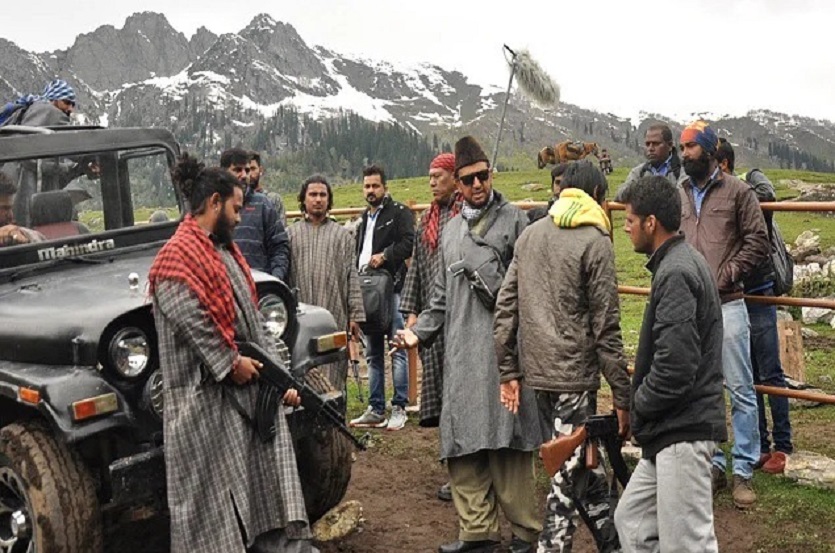
The fatalities that fiction causes by distorting reality into a pseudo reality are spread across the world.
By Asma Majid
IT was perhaps time to unmount. The mule seemed tired to the core traversing the Pir Panjal mountains for hours altogether. Hammad decided to walk but his pulhoer—slippers made of straw-rope—wouldn’t abide by the travails of his long journey. Had he been aware of the disobliging temperament of his mule that morning, he would’ve put on some special shoes apt for the rugged track.
The sun had come of age and he was still a kilometre away from his school. Disgusted by the mule’s act of cozenage to rid itself of burden, Hammad decided to walk it off.
With a heavy pheran on in the midst of July, a skullcap on the head and a slate in hand, traversing the rugged mountains was an arduous task but it had to be accomplished. Just a few yards and his pulhoer broke down. He knew it wouldn’t do, the straw-slippers were too impotent to assist him in crossing the rocky trail. So he made a quick fix and began to walk again. A couple of steps and he lost his balance and slipped down the mountain.
A hypnic jerk woke Hammad up. He wasn’t in deep slumber but perhaps in a trance, like a deep hypnosis, the resultant of a chain of bizarre interrogations by his fellow students at college.
Hammad, a Kashmiri, was a new admission in one of the reputed colleges of Delhi and thus his mates who had come across various myths and legends pertaining to his native land, propagated by fiction, were intrigued by his eccentric culture, the highlights of which were wearing pheran and a skullcap all year long, crossing mountains altogether to reach schools and places, writing on slates, wearing ancient slippers and living in houseboats, aloof from the land areas. They would ask with utmost astonishment as to how Hammad had such a good hold at Hindi language and why there was no native accentual effect in his speech.
While passing the corridor, some students would shout at Hammad and say, ‘Wala yooir’ (come here) just as they had heard the actor Mehmood say in the famous 1960’s Hindi movie based in Kashmir. They would even ask him if people of his land said, ‘Yalla kasam’ (By God) while swearing.
Despite being “so nerve-racking”, Hammad decided to endure, deeming them as short-lived.
But what makes him distraught lately is a totally unsound and off-base fictional narrative about his homeland which is fraught with fabrications. As a consequence of this, he’s now more concerned that those like him who put up outside the valley may face the music owing to the presentation of a purely fictionalized and fabricated reality.
Alack! The impacts of fictionalizing facts and realities are more far-reaching and stimulating than one can imagine. As such, Hammad is not the only one who suffers at the hands of this distorted media perception propagated strongly over the few past decades. Hareem finds herself in a similar quagmire.

As if it was not enough for her to convince people that in spite of being a Kashmiri woman she was a M. Tech degree-holder and that she was allowed to work in Bangalore given her dream of working in a multi-national organisation, that her colleagues ask her ditzy things.
Teasing Hareem by calling her ‘Kashmir Ki Kali’, the female staff now and then tells her to bring those Jhumkas—long earrings—for them which Sharmila Tagore wore in the movie.
“Does our culture and individual character only boil down to what is propagated through fictionalized cinematography?” Hareem wonders.
Some especially inquisitive mates even go to the extent of inquiring: “Are you people locked up in your houses for weeks when there is snow? We saw that in movies.” Others add up by saying: “Can you look through the windows or your houses themselves are clad with the snow?”
But unlike Hammad, Hareem is not patient enough to bear these interrogations. For every puerile remark, she responds with a befitting reply.

Once deemed as a form of entertainment, it never occurred to many Kashmiri out there as to how fiction operates on myriad levels of personality. For instance, Kashmir, once a hub of Bollywood shootings, served as an arena of film activities. But while appreciating the purity of pastures, the burble of murmuring rivulets, the magnificence of snow-clad mountains, all shot in the movies with utmost perfection, a Kashmiri could hardly make peace with the ding-a-ling portrayals of the native people.
As fiction would have it, these simpletons would either be well-versed with the art of Shikara riding, or some menial job which went well with their naive bearing.
At other times, they were so diminutive as to go unnoticed. As times changed, these dipsticks were replaced by malefactors of the worst sort which created a ballyhoo within the consumers of broadcast media and put the indigenous people in a tight spot vis-a-vis their original characters.
The fatalities that fiction causes by distorting reality into a pseudo reality are spread across the world.
A Black African child looks down upon herself because she has a white doll. All the billboards, banners and placards advertising face-whitening creams and lotions scourge her sensitive soul. Even the mug she consumes her milk in has the picture of a white girl on it. Looking into the mirror has become a curse for her. After all, the worldview converges on their concept of ‘white’ as the ideal, a bestowal of false media perception.

Hammad had once come across a nabeena—blind—Hakim Sahab in Delhi who happens to be a part-time soothsayer as well. What’s striking about him is that he diagnoses his visitor’s physical problems and ailments of the soul by just feeling their pulse: “Forward your wrist and I’ll suck out your troubles.”
The eccentric Hakim Sahab’s cure is also bizarre. For a pain in the neck, he offers an exercise of the legs and cures the soul by hitting a round metal plate with a clunk.
Recalling his fellow students, the victims of fatal media constructs, always goofing on him owing to their stereotypical image of his, Hammad feels the Hakim Sahab to be a microcosm of broadcast media that alters constructs, uttering a catena of lies that shall ultimately prove to the undoing of the visitor. The media too feels the pulse of the people, deciphers which way and in what strength its blood is flowing and then resets the direction to its own benefit.
When one looks into the machinery of media storytelling, some fundamental questions to answer are – How close is a fictional character to the real one? What constitutes a telling detail? What makes the metaphor successful? Is the realism portrayed truly realistic?
It’s a fairy tale that ostriches bury their heads in the sand. But, if ostriches did that, there would be sand in their eyes and ears. Also, if they kept their heads below chest level for long periods of time, they would pass out from high blood pressure. In reality, an ostrich resting on the ground will lay its head flat on the ground with its neck stretched out in danger. This is the difference between reality and a distorted media construct.
Hammad has learnt to turn a Nelson’s eye towards the provocative remarks of his fellow students, in hopes of convincing them to visit his homeland once and feel the difference. But Hareem, owing to her irascible disposition has pledged to pay back the peevish offenders in the same coin with interest.
Follow this link to join our WhatsApp group: Join Now
Be Part of Quality Journalism |
Quality journalism takes a lot of time, money and hard work to produce and despite all the hardships we still do it. Our reporters and editors are working overtime in Kashmir and beyond to cover what you care about, break big stories, and expose injustices that can change lives. Today more people are reading Kashmir Observer than ever, but only a handful are paying while advertising revenues are falling fast. |
| ACT NOW |
| MONTHLY | Rs 100 | |
| YEARLY | Rs 1000 | |
| LIFETIME | Rs 10000 | |










